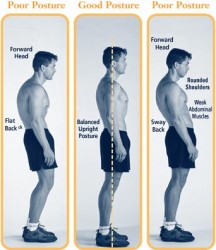Communication is everything. A doctor should inspire trust on every level, be willing to be interviewed, understand that you plan to have an active role in your own health.
Some women prefer women doctors, some like men. What is important, however, is that the doctor understand your concerns about preventive medicine, that the doctor is someone who will talk you through every stage of diagnosis and explain all possible side effects of any medication.
Questions to ask your doctor:
* What hospital are you associated with? (sometimes the doctor is great, but the hospital isn’t)
* How would I find you in an emergency? Can I have your home or beeper number? How do I reach your backup doctor? (Type all information on a wallet card for you and your family)
* How would I find you in an emergency? Can I have your home or beeper number? How do I reach your backup doctor? (Type all information on a wallet card for you and your family)
How do you choose your doctor? It’s not a very easy question to answer. However, I can tell you how not to choose your physician and, if nothing else, give you a tried-and-true set of guidelines as you make one of the most important decisions of your life.
I have been told many times by my patients and even my friends that when they are suddenly in need of medical attention or advice they simply open up the Yellow Pages and pick the physician with the largest advertisement. Needless to say, this is not a good way to find an excellent doctor. Or a plumber, for that matter. Others have told me that they close their eyes and pick their physician from the pages of their HMO book. Think about that for a moment: putting your life into the hands of a stranger picked at random out of the Yellow Pages or from some health-care provider’s booklet. Would you buy a car or appliance using this method? When you purchase a car, don’t you go automatically to Consumer Reports to check out the reviews and ratings and then give it a test drive first? One of the most important things you can do after reading this chapter if you do not yet have a primary doctor is to go find one before you get ill. Looking for a physician when you are sick with a fever or, God forbid, a much more serious ailment is not an opportune time to start.
The first thing to consider is the qualifications of the primary-care physician or specialist. Although medical credentials do not always guarantee a physician’s knowledge and expertise, they are a good place to start. So find out where the doctor went to medical school and where he or she did his or her residency. This information can be obtained by looking in books like Who’s Who in Medicine and Health Care, by calling your local hospital, or simply by calling the doctor’s office.1 You can also use the U.S. News & World Report website (www.usnews.com), for example, to find out a great deal more about medical-school rankings. I know my staff is always eager to answer these questions. Yet when I called a handful of offices in the five boroughs of New York City, I found that some of them were reluctant to answer my questions. In such instances, one can only surmise that these offices were staffed by physicians with second-rate training and dubious skills. Again, good-quality physicians with quality staff should be not only able to answer these questions but happy to do so.
Call a few offices, especially in large medical centers, and see if you get a headache listening to the phone ringing endlessly without an answer. If you can’t get through to an office to set up an appointment or to ask a simple question, imagine how you will feel when you really need to speak to the doctor. I’m sure there are patients and doctors reading this who have experienced this: no answer or an abrupt forward into a byzantine voice-mail system (often the black hole).
If you end up in an emergency room with a real medical problem, you may be given the doctor on call. The physician to whom you are assigned might be a poor doctor, indeed. The nurses in the ER are almost certainly aware of his deficiencies and are sympathetic to your dilemma, but no doubt they would be unwilling or afraid to tell you. I cannot stress enough the importance, if at all possible, of going to an ER in a large teaching hospital. You will be assigned a medical resident, and after seeing him, if you are able, you can ask him to call a physician he trusts.












